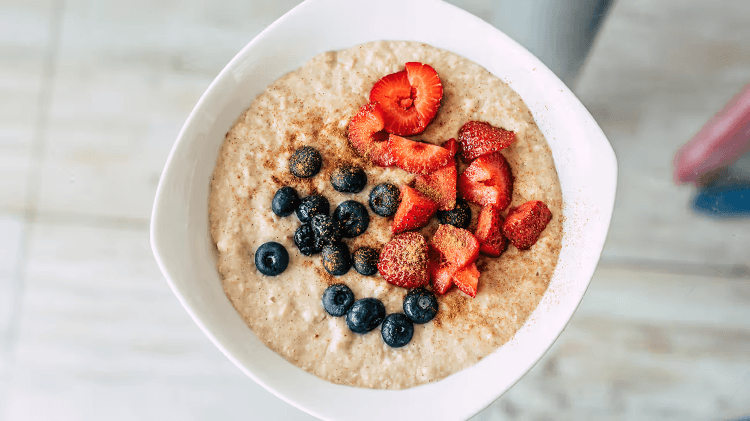Irritable Bowel Syndrome (IBS) is a common gastrointestinal disorder affecting millions of people worldwide. It causes a variety of uncomfortable symptoms, including abdominal pain, bloating, gas, diarrhea, and constipation. While the exact cause of IBS remains unknown, diet and lifestyle play a crucial role in managing its symptoms. A well-structured IBS diet plan can significantly improve the quality of life for those living with the condition.
This article explores the components of an effective IBS diet plan, focusing on symptom management, food choices, and practical tips.
Understanding IBS and Diet Triggers
IBS is a functional gastrointestinal disorder, meaning there’s no structural abnormality, but the digestive system doesn’t work properly. Triggers vary from person to person but often include:
Certain foods
Stress
Hormonal changes
Infections
Among these, dietary triggers are often the most manageable. Identifying and avoiding foods that irritate the gut is key to an effective IBS management plan.
The Low FODMAP Diet: A Gold Standard for IBS
One of the most effective dietary strategies for managing IBS is the low FODMAP diet, developed by researchers at Monash University in Australia.
What are FODMAPs?
FODMAPs are a group of short-chain carbohydrates that are poorly absorbed in the gut. The term stands for:
Fermentable
Oligosaccharides (e.g., fructans, galacto-oligosaccharides)
Disaccharides (e.g., lactose)
Monosaccharides (e.g., excess fructose)
And
Polyols (e.g., sorbitol, mannitol)
These compounds can ferment in the gut, causing gas, bloating, and other IBS symptoms.
Low FODMAP Diet Phases
Elimination Phase: Remove all high-FODMAP foods for 4–6 weeks.
Reintroduction Phase: Gradually reintroduce FODMAPs one at a time to identify triggers.
Maintenance Phase: Personalize the diet based on individual tolerance.
IBS-Friendly Foods
While the low FODMAP diet is helpful, a general IBS-friendly diet emphasizes:
Safe Foods (Low FODMAP)
Proteins: Chicken, turkey, eggs, fish, firm tofu
Grains: Rice, oats, quinoa, gluten-free bread
Vegetables: Carrots, zucchini, spinach, green beans
Fruits: Bananas (unripe), blueberries, grapes, kiwi
Lactose-Free Dairy: Lactose-free milk, hard cheeses
Drinks: Herbal teas, water, almond milk
Foods to Avoid (High FODMAP)
Vegetables: Onions, garlic, cauliflower, mushrooms
Fruits: Apples, pears, watermelon, mango
Legumes: Lentils, chickpeas, black beans
Dairy: Milk, ice cream, yogurt (unless lactose-free)
Sweeteners: Sorbitol, mannitol, xylitol (often in sugar-free gum/candy)
Sample IBS Diet Plan (Low FODMAP)
| Meal | Food |
|---|---|
| Breakfast | Gluten-free oats with lactose-free yogurt, blueberries, and chia seeds |
| Snack | Rice cakes with peanut butter |
| Lunch | Grilled chicken salad with spinach, cucumber, carrots, olive oil dressing |
| Snack | Banana (unripe) or kiwi |
| Dinner | Baked salmon, steamed green beans, and quinoa |
| Drink | Herbal tea (peppermint or ginger) |
Additional Tips for Managing IBS Through Diet
Eat Regularly: Don’t skip meals. Small, frequent meals help regulate digestion.
Chew Thoroughly: Helps reduce bloating and improve digestion.
Stay Hydrated: Aim for 6–8 glasses of water per day.
Limit Caffeine and Alcohol: Both can irritate the gut.
Reduce Fat Intake: High-fat foods may worsen symptoms.
Track Your Symptoms: Keep a food and symptom diary to identify personal triggers.
When to See a Dietitian
Because IBS is highly individualized, it’s best to consult a registered dietitian experienced in gastrointestinal disorders. They can guide you through the low FODMAP diet and ensure you’re meeting your nutritional needs.
Conclusion
Managing IBS through diet can be life-changing. A personalized IBS diet plan, especially one centered on the low FODMAP approach, can greatly reduce symptoms and improve quality of life. With the right guidance and a commitment to mindful eating, people with IBS can regain control over their digestive health.


